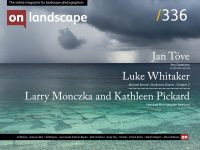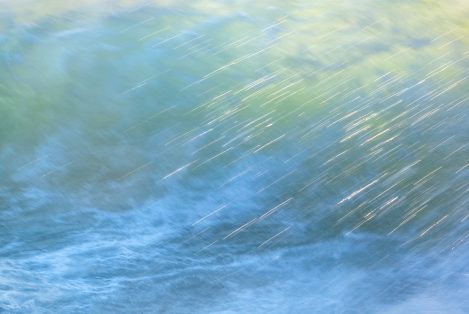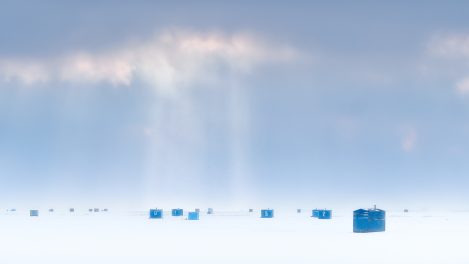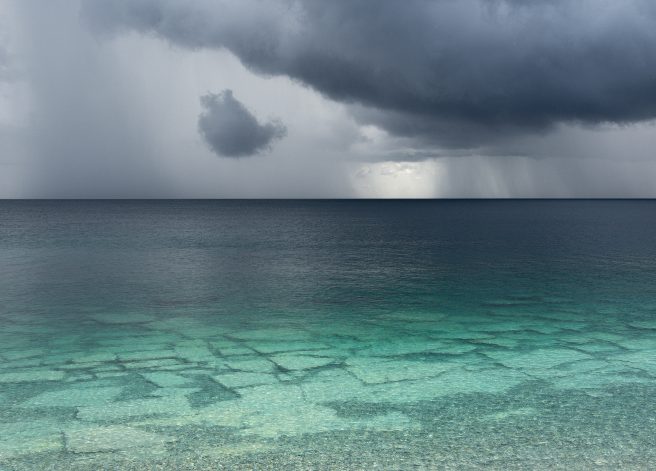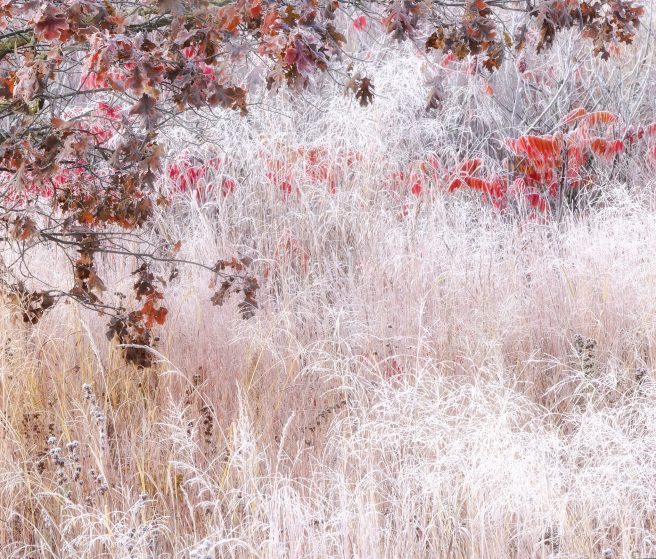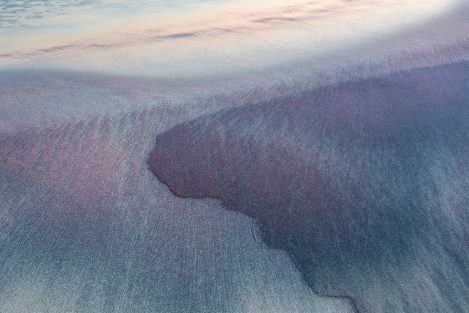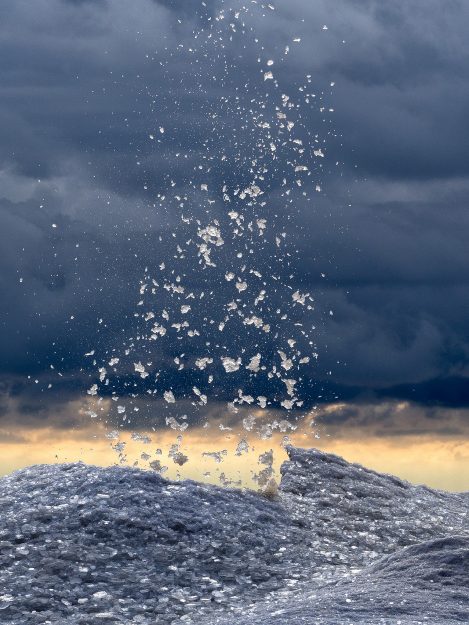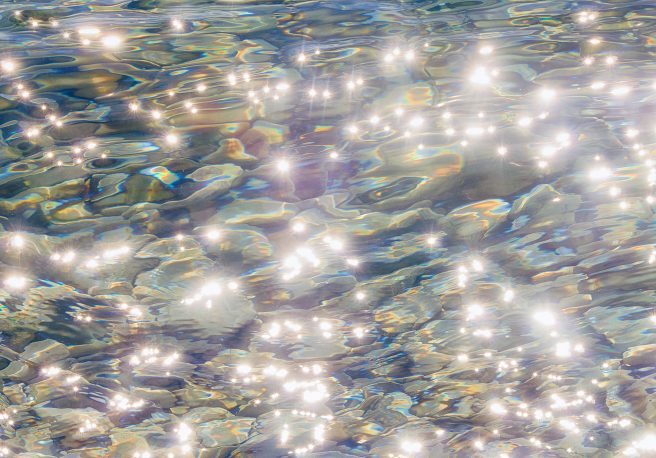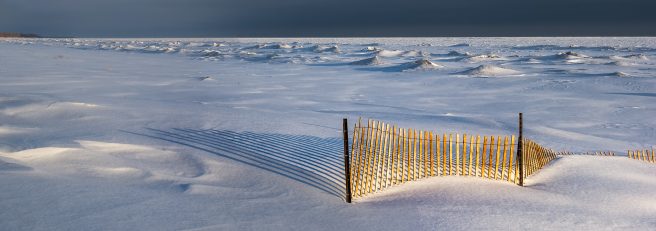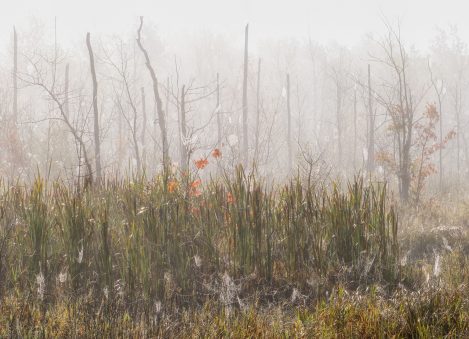Featured Photographer Revisited

Larry Monczka
Mentored by the eminent Canadian photographer and educator Freeman Patterson, Kathy and Larry have been engaged in photography since the late 70s.

Kathleen Pickard
One of my greatest pleasures in photography is uncovering the unfamiliar in the familiar. When I hear from a viewer that “I live here but I’ve never noticed that before!”, I smile in satisfaction. Beauty is often hiding in plain sight, but it takes practice to see it.

Michéla Griffith
In 2012 I paused by my local river and everything changed. I’ve moved away from what many expect photographs to be: my images deconstruct the literal and reimagine the subjective, reflecting the curiosity that water has inspired in my practice. Water has been my conduit: it has sharpened my vision, given me permission to experiment and continues to introduce me to new ways of seeing.
When we first spoke to Kathleen Pickard and Larry Monczka, their quietly contemplative photography quickly found new fans. I can’t help but wonder if they have been interested observers as intimate, abstract landscapes have grown in popularity. We wanted to find out what they have been up to in the intervening period, and as it happens, the timing of our request for a Revisited interview coincided with their own review of practice and images.
I pinched myself to find that it has been 10 years since we interviewed you both. Bring us up to speed - what have you been up to?
The timing of your invitation could not have been more fortuitous. In 2014, we had a hand in initiating a regional photographic discussion group, "Four Corners", in which we've participated since that time. The group, presently comprised of nine photographers, meets monthly (since Covid via Zoom) to discuss, i.e. dissect, five images from each of us. The free-wheeling critique, conversations, and laughter have kept us grounded and at the same time provided a constant source of inspiration.
In 2024, the group decided that a decade of viewing and commenting upon each others' work deserved to be celebrated in the form of a book. We were individually tasked with selecting a single image from each of those ten years that we felt best represented our approach at that particular moment in time. The choices weren't to be a string of 'greatest hits', but rather, images that held some significance in our personal photographic history.
That assignment required us to take the time to survey and consider a decade's worth of images. Though this consumed hours of time, it was an exercise well worth doing. It was essentially a visual diary, making each of us aware of how much our lives have been consumed and enriched by our mutual avocation. As it happens, it couldn't have been a more serendipitous preparation for writing this piece.
Larry's and my photographic life over the last ten years, which essentially has gone hand in hand with our personal life, can be characterised as being in two chapters: pre-Covid, with travel to cultural and photographic locations world-wide, and post-Covid, with health challenges keeping us close to home.
You spoke passionately about the "bountiful range of subject matter" in Norfolk County, and mentioned that "the quiet lay of the land encourages us to look closer and photograph on a smaller, more intimate scale." What new treasures have you found as you continue to dig into the smallness of home and the local?
We continue to be most inspired visually by two locations close to our hearts.
The geography of home continues to be rural Norfolk County in the deep south of Ontario, Canada. Though it can't claim dramatic landscapes, it is rich in woodland, wetland and sand dunes. Its crown jewel is Long Point, a sand spit extending 40 kilometres into Lake Erie. Long Point is designated as a Globally Significant Important Bird Area (IBA) due to its critical role in supporting bird populations during migration, breeding, and wintering periods. It is also recognized as a Ramsar site, a World Biosphere site, and an International Monarch Butterfly Reserve, highlighting its broader ecological significance.
Regular visits to favourite photographic locations in Norfolk County have made us more sensitive than most to changes in the landscape that are both seasonal and longer-term. For example, managed prairie restorations full of native wildflowers become overgrown over time, only to regenerate via controlled burns. Wetland sites may be battered by storms to the point of losing their immediate visual appeal. Photographically speaking, this may be best exemplified by a small stretch of beach at Long Point, perhaps 150 metres in length. Over the years, the lake levels cycle through highs and lows. At times, the water is lapping at the margins of the access road, obliterating the beach. In other years, we can walk the length of a now wide beach blanketed in colourful oxide-rich sand. It is no surprise then that the beach is classified as dynamic.
In 2015, you noted that photography wasn't really considered an art form locally. How do you feel that the perception and acceptance of the medium have evolved over the past decade?
Over the last ten years, we have participated in numerous joint and solo exhibitions in community museums and galleries. On two occasions, we have collaborated on projects with well-regarded artists, signalling, we think, more acceptance of photography within the local art community.
Have your tastes in photography changed at all, or what you find inspiration in? Your interview highlighted your shared admiration for a number of artists, from Eliot Porter to Henri Matisse. Beyond those that you mentioned, have any new individuals, media, or technologies significantly influenced your work in the last decade, individually or as a couple? You both look to have been experimenting with other media.
In the realm of landscape photography, we very much admire the work of Andrew Mielzynski,
Jason Pettit, a fellow Ontarian, is a photographer whose work is very much in harmony with ours.
A great influence upon us both can also be found in our own photo discussion group. Barbara Bender can't be classified as a traditional landscape photographer, though she is, in fact, a very accomplished one. We consider her an artist who uses her photographs as a jumping-off point to further visual creativity (think Bailey/Chinnery). Of late, she's been using her archive of straight photography as raw material to construct deceptively naive "virtual landscapes" that suggest mysterious alternative worlds.
We have also ventured into new creative outlets--cyanotypes, monoprints, collage, painting and mixed media, greatly assisted by online learning opportunities. We've been gratified to find that the many years of experience we've accumulated in visual design, composition and colour as applied to our photography, transfers well to other mediums. Interestingly, our preferred subject matter hasn't substantially strayed from our photographic areas of interest.
Have there been any significant changes in kit for you, or in your workflow in making and processing images?
We remain very happy with our micro 4/3 systems, now OM-1s with a full complement of Olympus pro lenses. We do not trespass into each other's camera bags and, in fact, are unable to interchange camera bodies due to our stubborn individual set-up menu preferences.
Our tripod use has diminished to a minimum due to the excellent internal stabilization of the OM system. Larry's most recent addition to his photo gear is a kayak that is equipped (by Kathleen) with a waterproof point-and-shoot, an OM Tough. He has found the change of viewpoint, being able to shoot from water rather than land, has expanded his photographic possibilities.
An unintended consequence of the pandemic and various ongoing health issues that have confined us, singly and together, to home for weeks and sometimes months in the last few years has been the collaborative production of numerous self-published photo books. Virtually every one of the projects and exhibitions mentioned above has had a collection of images harvested from dusty hard drives that are subsequently edited, sequenced, and designed into a publication; a process we both find extraordinarily satisfying.
Have your respective styles or routines evolved more closely together or diverged?
The question of our styles is an interesting one. As each of us was becoming serious about photography, and well before we had met one another, we had taken a series of week-long workshops with the eminent Canadian educator and author Freeman Patterson. His emphasis on visual design and personal expression influenced us then and has continued to guide our approach.
When we compiled our 10 year collections of images as part of our “Four Corners” critique group, we were fascinated to observe that our style of seeing matured early on and has stayed similar over the years; not surprising considering our shared photographic DNA. Good field craft back in the analogue days put our technique on solid ground and made the transition to digital easier.
Our subject matter has evolved somewhat.
Kathleen, you wrote a piece for On Landscape in 2021 titled ‘Photographing the Un-Grand Landscape’. Re-reading this, I was interested in you saying “In an intimate landscape, more ambiguity exists. …the viewer is led through and around the picture space by means of visual design.”
I usually extend an invitation to offer some words of advice to readers relevant to the interviewee’s specialism or particular experience. I wondered if you might like to talk about how you use visual design in your photographs.
I describe myself as an expressive photographer. In other words, at the heart of my photography is a desire to communicate something about my subject that goes beyond seeing and into feeling, whether for myself or for others.
The first step in the process is to “see” whatever it is that stops me in my tracks. If what I notice motivates me to make a photograph, I then have a multitude of decisions to make: angle of view, depth of field, shutter speed, to name just a few.
When in the field, most of those decisions are made intuitively. Later, when processing the image at the computer, those intuitive decisions are then refined by applying the principles of visual design. Often that can mean paring away information that is extraneous to what I want to say. At its heart, photography is a subtractive process.
A major part of my photography is understanding how to assess visual weight and then managing the visual elements to create what Valda Bailey calls “aesthetic balance”; that is to say, composing the image.
In this example, for instance, I used a somewhat more panoramic format than I originally made in camera. That was done to eliminate a distracting strip of brighter sky at the top of the frame that drew excessive attention to itself, and to emphasize the density of the spring vegetation.
An excellent introduction to understanding the principles of visual design is “Picture This: How Pictures Work” by Molly Bangs. It may look like a children’s book, but that’s deceiving; it’s packed with information.
The best book I can recommend specifically for photographers is Freeman Patterson’s “Photography & the Art of Seeing”. Not only does the book examine the elements of design in detail, but it also proposes exercises to help you in your ability to apply them.
The best book I can recommend specifically for photographers is Freeman Patterson’s “Photography & the Art of Seeing”. Not only does the book examine the elements of design in detail, but it also proposes exercises to help you in your ability to apply them. Like learning to drive a car, by practising them often enough, they become intuitive.
And Larry… you seem to have been especially busy curating books and exhibitions of your work. In the light of your experience, is there any advice that you would give to readers who would like to exhibit, or make a book of, their own photography?
I find great satisfaction in cobbling together photo books. Since I tend to photograph in projects over months and years, coming up with a concept for each book is relatively easy. I have used Blurb.com “Bookwright” software for over a decade and find that it is user-friendly (online video tutorials are available) with good quality reproduction for the price.
Being a print-on-demand service is convenient for me–I keep a few copies on hand for sales in local retail venues and gifts, then order more as needed. Discounts offered by Blurb periodically throughout the year keep my average costs down, but in truth, self-publishing using on-demand services is expensive. Even so, harvesting images from hard drives and holding the resulting book in hand is extremely gratifying.
I make both hard and soft cover photo books (50 pages plus) and zines (20 or so pages), depending on the size of my projects. Once I decide on a theme, I gather together a long list of image files from my many external hard drives, then drill that group down into a more focused short list. I print out each image from the short list on 5"x 7" cards. This allows me to evaluate which images need tweaking or wholesale re-processing.
Laying out the cards for sequencing is great fun. Many days and weeks go into this phase as story flow, page pairing, colour harmony, and intuition come into play. The cards are shuffled and shifted, and images come and go with invaluable editorial input from Kathy until we are both happy with the result.
The images are then sized for the software, dragged and dropped into the chosen template; then the text and font decisions are made, and the front and back cover designed. When the proof copy arrives, the inevitable spelling mistakes are corrected, as are the odd exposure adjustments. Then it's voilà! and on to the next book project.
With each new book project, design and sequencing decisions evolve, as does confidence and the freedom to take creative risks. I’ve discovered that my books, presented to galleries and local museums, often lead to exhibitions and sponsorships. Curators can see immediately the concept and quality of the work and decide if it suits their needs. Free previews of the finished books on the Blurb website can lead to sales and print orders.
To end, have either of you acquired any new hobbies or passions? Do you have any plans or ambitions for the future that you can share with us?
Over the years, we have learned to have both patience and confidence that new subjects will develop and be discovered, even as old ones go missing. The key thing we have found is to be flexible and open to surprises. Fixed expectations in the field inevitably lead to missed or overlooked opportunities.
While it is our continuing pleasure to delve into the natural landscape surrounding us, Larry has also taken on personal projects documenting tobacco kilns (remnants of this area's tobacco farming culture), the graphic appeal of sand fences that are annually erected on Long Point beach to thwart dangerous winter gale destruction,
Kathy has become especially appreciative of subject matter that fluctuates, even as occasional compromised mobility keeps her stationary. Water, combined with sand, stones and light, is infinitely variable. They are the basis of her LensWork portfolio "Seeing Through" and have been published widely.
Together, we both have ongoing photographic projects. They include documenting the evolution of a re-wilded prairie on former depleted tobacco land, exploring the "Seldom Seen" natural landscape of Long Point in winter and, when our fluctuating climate allows, photographing the colourful colony of ice fishing huts that populate the shallow inner bay of Long Point.
Thank you, Larry and Kathleen. As always, we look forward to seeing more of your work.
Larry and Kathleen’s photos can be found on their website.
Matt Payne’s short ‘Portrait of a Photographer’ article, featuring Jason Petit, can be found here.
Larry Monczka
Kathleen Pickard
- Kathleen Pickard

